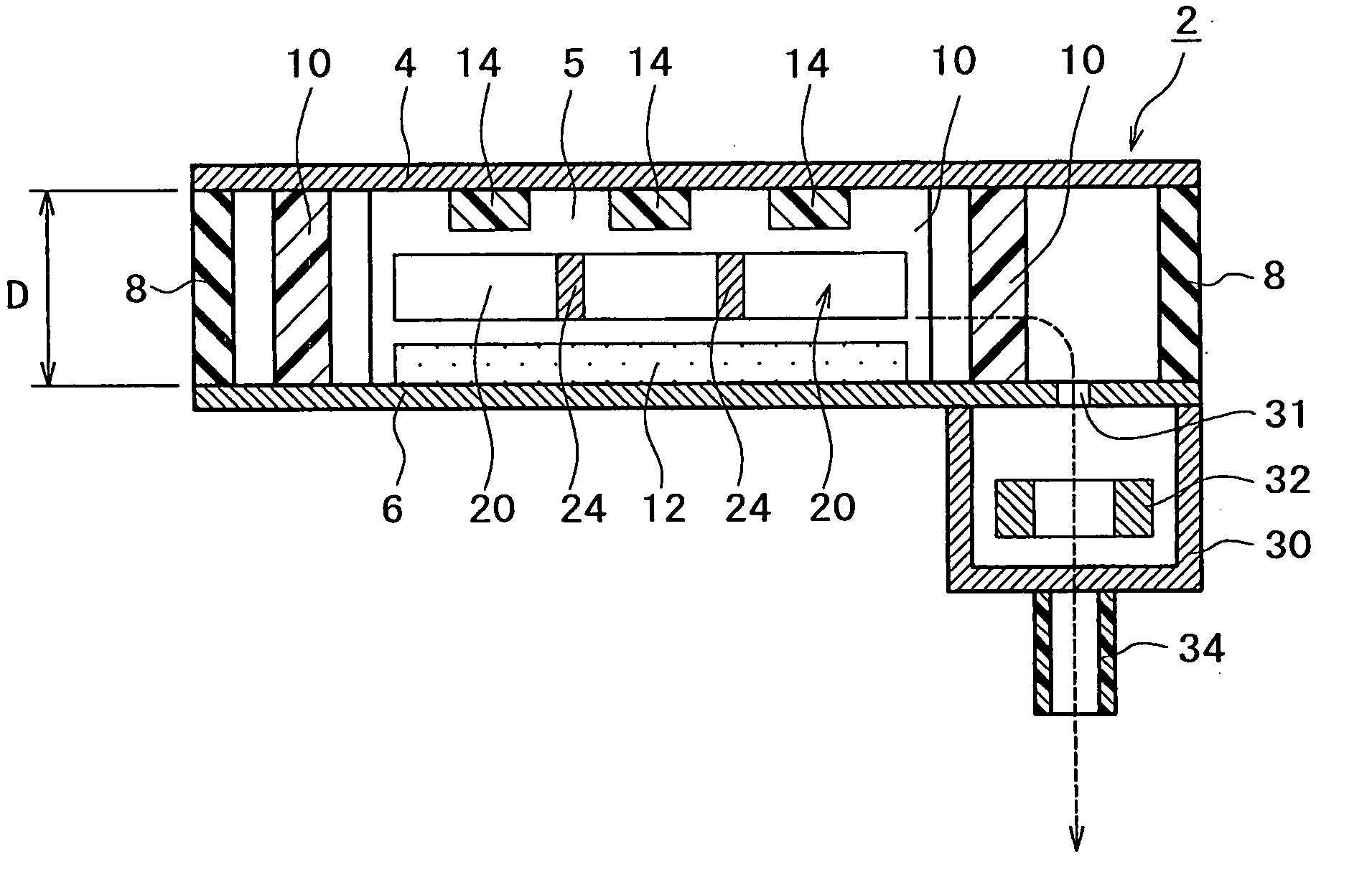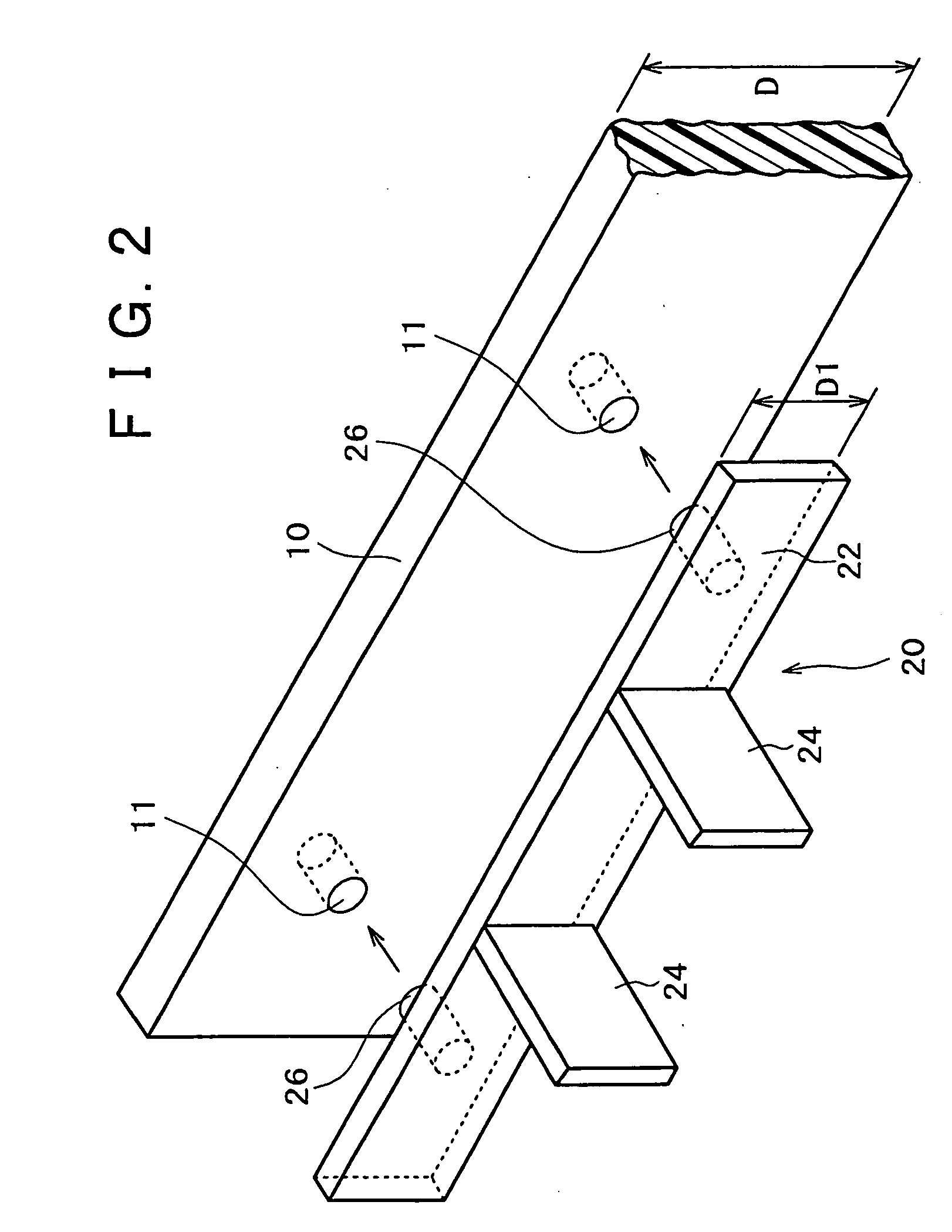Non-evaporation type getter, display unit and production method for them
a technology of evaporation type and getter, which is applied in the manufacture of electrode systems, electric discharge tubes/lamps, and tubes with screens, etc., can solve the problems of shortening the life of the fed, affecting the effect of masking, and affecting the effect of voltage resistance characteristics between substrates
- Summary
- Abstract
- Description
- Claims
- Application Information
AI Technical Summary
Benefits of technology
Problems solved by technology
Method used
Image
Examples
example 1
[0103] In powder injection molding, first, a metallic powder including elemental Ti as a principal constituent and a binder were kneaded with each other, to prepare an injection molding material. The average grain diameter of the metallic powder was 10 to 20 .mu.m. Besides, as the binder, a paraffin-propylene based binder was used.
[0104] Next, the powder injection molding material was injected into a mold having a cavity in the shape of the non-evaporation type getter 20c shown in FIG. 4C, to form a pre-molded body. Then, the binder contained in the pre-molded body was removed. The process up to this stage was carried out under the same conditions as in the ordinary powder injection molding.
[0105] Subsequently, the pre-molded body was baked, to obtain a molded body composed of a sintered body. The baking temperature was 900.degree. C. The porosity of the molded body after sintering was 25%. An electron microphotograph of the molded body after sintering is shown in FIG. 6A.
[0106] Nex...
example 2
[0112] A vapor-deposited film composed singly of Zr was formed by an electron beam vapor deposition process on the surface of the sintered body getter obtained in Example 1, and the resulting getter was subjected to the same gas absorbing capability test as in Example 1. The thickness of the vapor-deposited film was 0.1 .mu.m. The result is represented by curve A4 in FIG. 5B. In addition, an SEM section photograph of the getter thus obtained is shown in FIG. 7.
[0113] As shown in FIG. 5B, the getter obtained in Example 2 showed a further longer life of gas absorbing capability and, as a whole, an enhancement of absorbing capability up to about 10%, as compared with the getter obtained in Example 1.
example 3
[0114] A non-evaporation type getter composed of a sintered body was formed in the same manner as in Example 1, except that the sintering temperature for the molded body was set to 950%. A section photograph of the getter thus obtained is shown in FIG. 6B. It was confirmed that pores can be formed sufficiently by this method.
PUM
| Property | Measurement | Unit |
|---|---|---|
| porosity | aaaaa | aaaaa |
| grain diameter | aaaaa | aaaaa |
| porosity | aaaaa | aaaaa |
Abstract
Description
Claims
Application Information
 Login to View More
Login to View More - R&D
- Intellectual Property
- Life Sciences
- Materials
- Tech Scout
- Unparalleled Data Quality
- Higher Quality Content
- 60% Fewer Hallucinations
Browse by: Latest US Patents, China's latest patents, Technical Efficacy Thesaurus, Application Domain, Technology Topic, Popular Technical Reports.
© 2025 PatSnap. All rights reserved.Legal|Privacy policy|Modern Slavery Act Transparency Statement|Sitemap|About US| Contact US: help@patsnap.com



